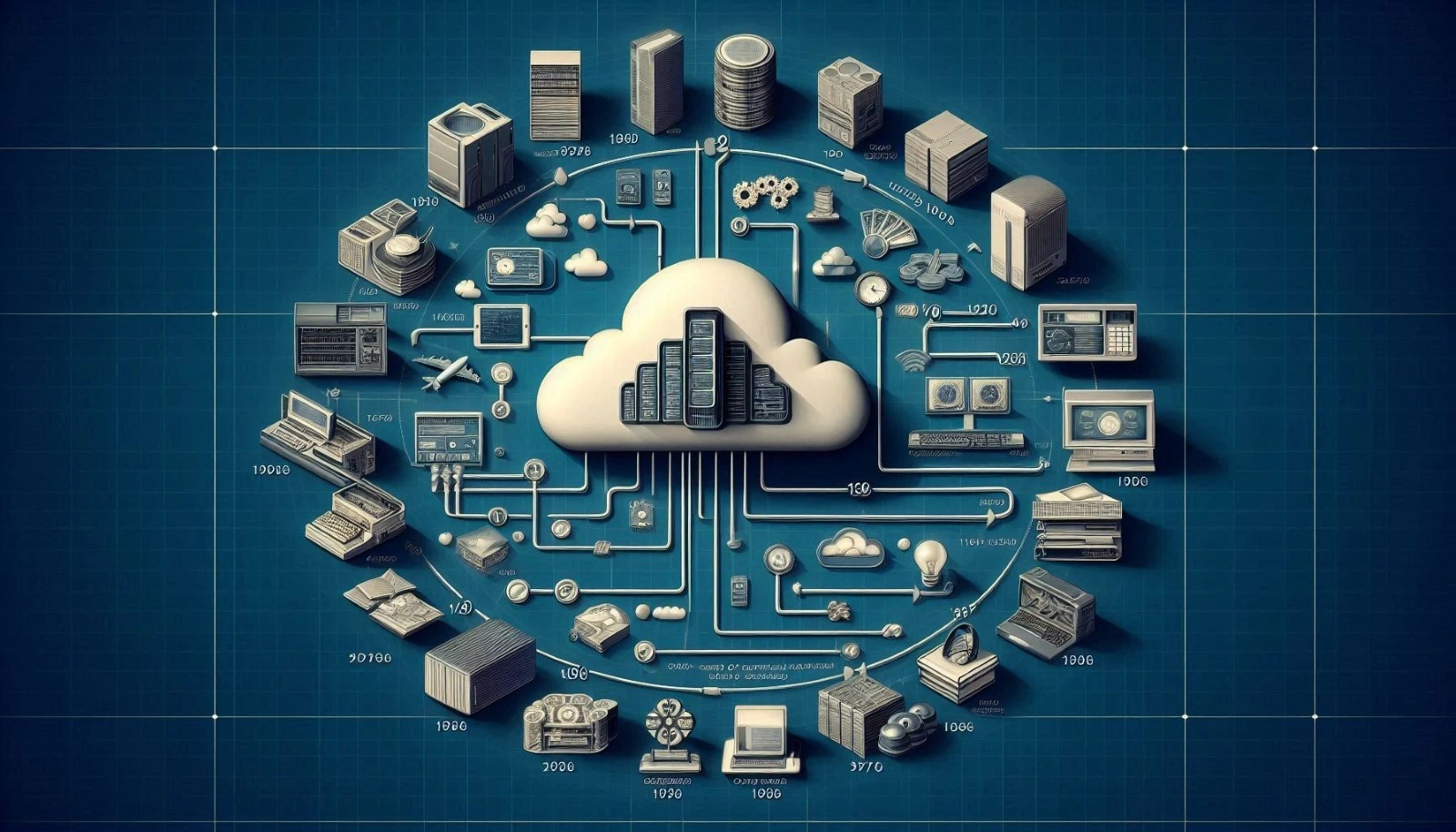The cloud services market reached USD 587.78 billion globally in 2023. Shocking, right?
Nowadays, almost every company relies on cloud storage, whether for photos or work files. Yet few of us know the amazing journey that got us here.
But have you ever thought of questions like,
How Did Cloud Computing Evolve?
Why do we call it “the cloud”?
Let’s explore the complete history of cloud computation and its future in this blog post.
A common question – what is “cloud” in “Cloud Computing”?
In the early days of networking, engineers wanted a word to represent a complex network or “unknown”. They used a cloud symbol to show connections they couldn’t fully map out but knew existed. That’s where “cloud computing” comes from—a mysterious network where all our data is stored and shared!
In the initial days when computers were launched, they were too massive. Also, buying a computer was expensive. That’s why John McCarthy came up with the idea of “time-sharing.” It lets people rent time on a single mainframe instead of buying one. This was like the first “shared” computing experience. Not exactly the cloud, but it was the beginning!
J.C.R. Licklider, an American scientist, wanted to create a network where all computers around the world could connect with each other. This network is known as a “Galactic Network”. This is where ARPANET, the initial version of the internet, launched! With ARPANET, people could finally connect and share information over long distances.
Who knew that this idea would lay the groundwork for cloud computing?
Fun Fact You Must Get Amazed!
These virtual spaces allow businesses to store their data online.
This was a game-changer!
Companies didn’t need to buy expensive servers or build data centers they could use Amazon’s resources instead. Amazon’s cloud services helped start a whole new industry and created new possibilities for both small and large businesses.

Cloud storage became popular, offering lots of storage space, security, and flexibility. Cloud storage makes it easy to keep backups, get instant access, and share data easily.
Cloud computing applications have reshaped entire industries. Here are a few areas where the cloud plays a crucial role:
Smart Devices: Everyday gadgets like fitness trackers and home security cameras send and save data through the cloud.
Data Storage: With cloud storage, like Google Drive and Dropbox, we can keep our photos, documents, and other files online and get to them from anywhere—even on our phones.
Business Tools: Companies use the cloud for things like keeping track of customers and looking at data to help them run smoother and make smarter choices.
New Technology: The cloud makes it possible to handle lots of information fast, which helps with things like finding trends in data and creating tools we use every day.
The evolution of cloud computing is as follows –
